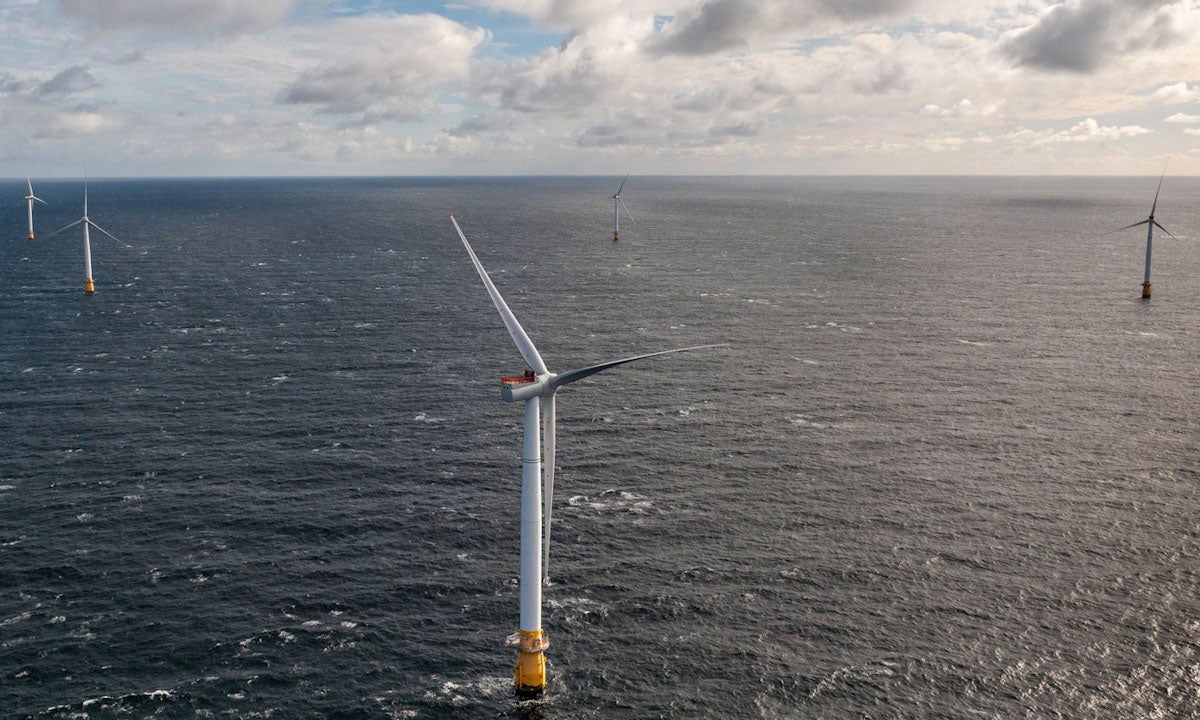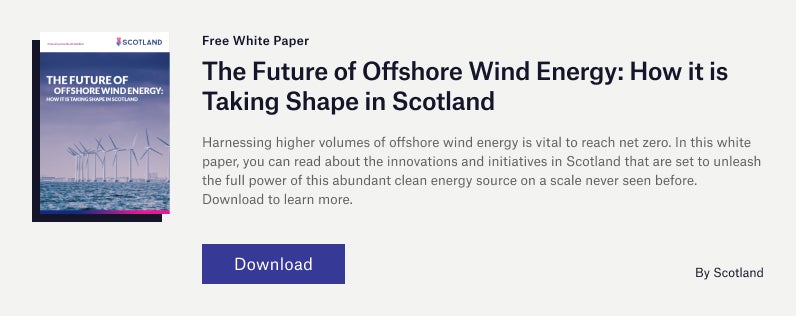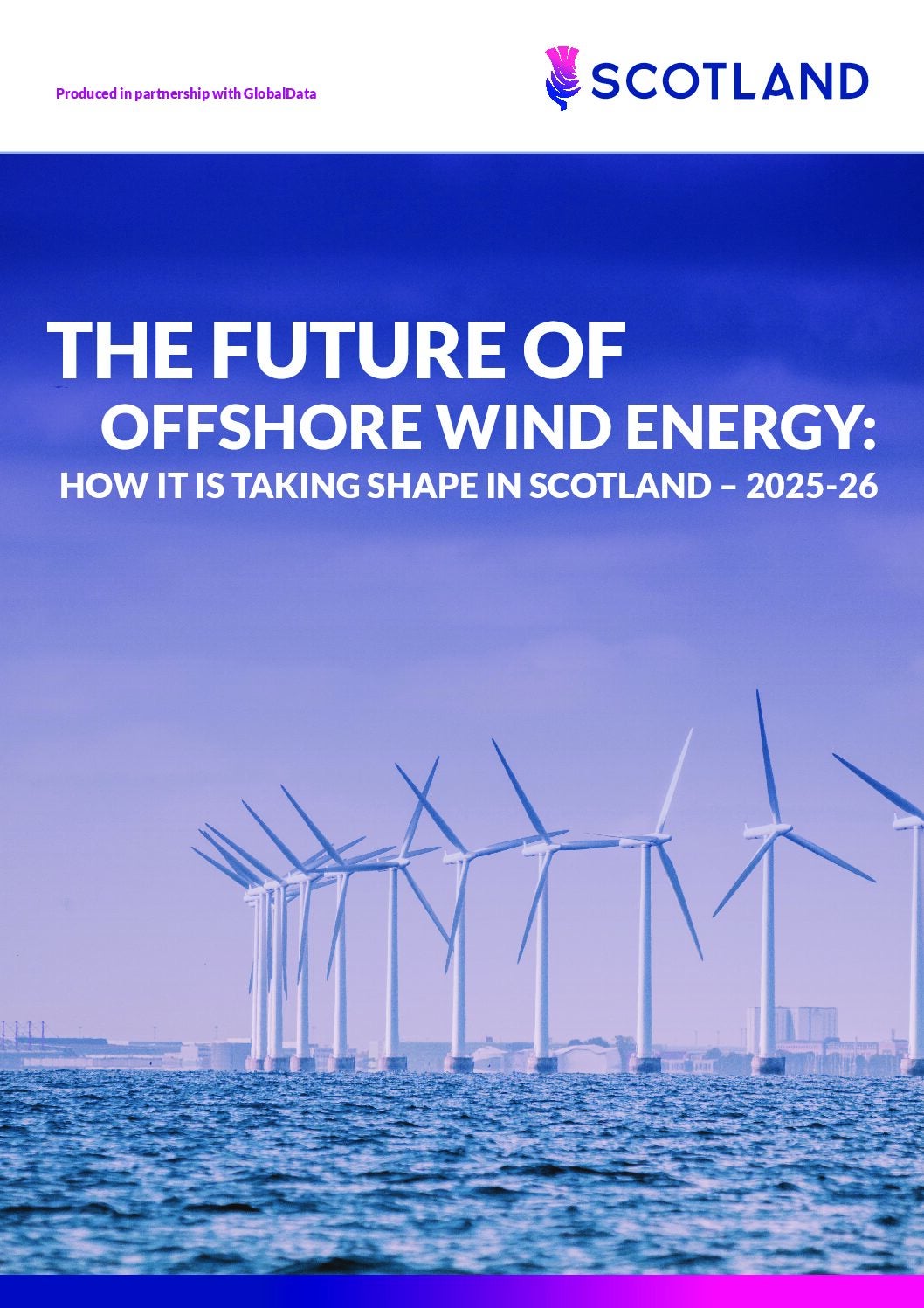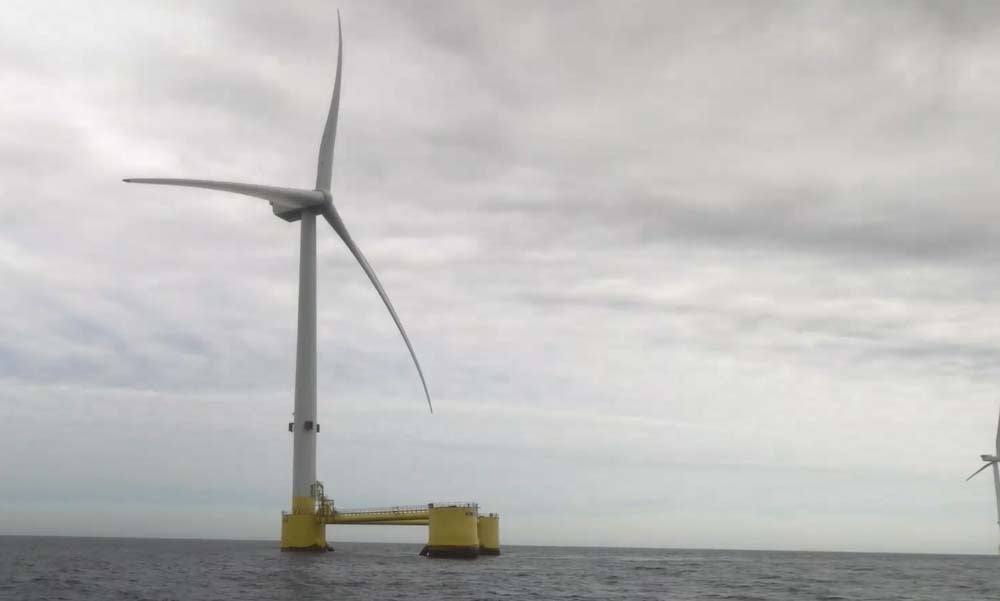
Floating wind energy has considerable untapped potential, but obstacles must be overcome to fulfil the promise of an industry still in its relatively early stages.
At the end of 2023, floating wind projects had an estimated global operational capacity of 270MW, according to the International Renewable Energy Agency (IRENA). However, IRENA put the capacity of pipeline projects for floating wind at 244GW globally.

Around 10% of this possible global total could be generated by floating wind turbines in Scotland, with potentially 24.5GW from projects planned in the ScotWind and Innovation and Targeted Oil & Gas (INTOG) leasing rounds. This will go a long way to supporting Scotland’s commitment to reach net zero by 2045.
Such a scale-up over the next couple of decades will require solutions to multiple challenges in a relatively short time. Yet with challenges come opportunities.
Scotland has a head start with floating wind, as the home of Hywind Scotland – the world’s first floating wind farm on a commercial scale, which has been operating since 2017. Another notable Scottish floating wind project is the 50MW Kincardine Offshore Wind Farm 15km off the coast of Aberdeen. Located in water depths of 60m–80m, the Kincardine facility produced its first power in 2021 and can provide enough electricity for approximately 35,000 homes.
Furthermore, Scotland is strongly positioned to optimise opportunities in floating wind through its extensive experience in fixed-bottom wind and oil & gas operations in adverse North Sea conditions.
The need for a consensus on floating wind technologies
Unlike fixed-bottom turbines, floating units do not have foundations on the seabed. The most likely scenario is for the foundation to be held in position by mooring lines and anchors, similar to when ships are moored.
The fact that there is not yet an industry consensus on the optimum floating foundation underlines that standardisation is a key challenge that must be overcome. There is also increasing talk among developers about commonality, where the most common subcomponents and processes are applied to different types of floating foundations.
However, standardisation and commonality are parts of the wider challenge. Ian Taylor is project director of Edinburgh-based Thistle Wind Partners (TWP), a developer of offshore wind projects. He suggests that an industry-wide process to encourage later-stage development of technologies is required to get them certified and to a commercial or utility scale more quickly.
“I have been talking at various conferences about what we call a ‘Formula 1’ type approach, where it is partly standardisation. But it’s also putting the funding behind technologies that are more advanced. Rather than spreading that funding across 50–100 different technologies, which doesn’t really get you anywhere.
“That focus must be driven by the industry and government, together with certification bodies. It is needed to get us to a point where we have those products ready for major contracts to be signed by developers like us by the end of this decade.”
ScotWind projects in development
TWP secured two sites in the ScotWind leasing round in 2022, which are scheduled to be operational within the next decade.
TWP was founded by companies Aspiravi, DEME Group and Qair – all of which have considerable experience in renewable projects and offshore engineering. Qair is currently involved with a 30MW floating wind prototype project in the Mediterranean that uses a type of barge technology.
“The big leap we have got in floating offshore wind is to move from the one-offs to the serial production of these technologies. That is where the challenge for our industry is, but we saw that challenge being met for fixed-bottom turbines,” adds Taylor.
The first power from TWP’s two Scottish projects is expected in the early 2030s and could generate enough combined electricity for more than two million homes. TWP’s projects will use a combination of jacket (fixed) and floating foundations, which presents many opportunities for the Scottish supply chain and companies developing the necessary technologies domestically. TWP estimates that its two projects could provide around £2.4bn ($3.13bn) for the Scottish supply chain over their combined service life.
At present, TWP is carrying out pre-front-end engineering design engineering assessments and cost studies for its projects. One is the 1GW Bowdun Offshore Wind Farm, a fixed-bottom project 44km from the Aberdeenshire coast.
The second project is a floating wind farm to the east of Orkney and north of Caithness. At the deep-water site, the Ayre wind farm will have a generation capacity of 1GW. TWP suggests the site could comprise 40–60 turbines. Each unit will have a likely capacity of around 15MW. Furthermore, the turbines may not even be visible from Caithness, with little visibility of them expected from Orkney.
In a sign of progress, TWP submitted an offshore scoping report for the Ayre wind farm to the Marine Directorate of the Scottish Government in July. Next year, the plan is to send environmental impact assessments to the Marine Directorate, when visualisations of the wind farms will also be released.
Dedicated facility for floating wind development
With new solutions required for refining floating wind technologies, a dedicated facility within the Energy Transition Zone in Aberdeen is likely to play a vital role. The Floating Wind Innovation Centre (FLOWIC) is the UK’s first facility for developing commercial floating wind technologies, set up by the Offshore Renewable Energy Catapult and supported by ETZ.
FLOWIC is equipped with large-scale testing and validation facilities for anchoring systems, moorings and cables. Tests can also be conducted on a small scale to determine the effect of factors such as fatigue on prototypes, before scaling up successful systems.
In addition, the centre features a simulator capable of recreating wave motions and other adverse movements encountered by floating wind installations in operation. There are also design services available and virtual reality capabilities to fully explore concepts in various scenarios.
The intention is that FLOWIC will help accelerate the derisking process of floating wind technologies.
“FLOWIC is a fantastic facility,” says Taylor. “I was up there recently and had a look around.”
“They are focusing on developing certain components and testing everything,” he adds. “It is also a pool to bring together a lot of developers, share ideas and address common challenges.”
FLOWIC was set up with a £2m investment, with design and manufacturing at the facility reliant mainly on the supply chain from the local area, which is a recurring theme for the offshore wind sector in Scotland.
Strategic investments in Scottish floating wind
Investment is a key driver in advancing floating wind in Scotland. All ScotWind and INTOG project developers have made commitments to use the Scottish supply chain. Since 2022, the Scottish Government has worked closely with offshore wind developers to deliver transformational supply chain growth. Underpinning this success is the Strategic Investment Model (SIM), developed following recommendations provided in 2021’s Strategic Investment Assessment.
Recommendations in the assessment included the establishment of the Scottish Floating Offshore Wind Port Cluster to foster collaboration and growth. The assessment also emphasised the need to support Scottish suppliers and accelerate the energy transition – a brief that the SIM is responsible for.
By working across the industry and the public sector, the SIM aims to pool resources and funding to help projects reach final investment decisions in time to support Scotland’s offshore wind scale-up. A first call for proposals was sent out in May 2023, with 38 of 44 applicants progressing to Stage 1.
These projects have a potential combined capital value of £6.5bn. The SIM has also advanced two projects to Stage 2 and published the names of a further 30 in February that have successfully completed Stage 1. With the SIM in place to encourage local and inward investment, the development of offshore wind manufacturing and infrastructure should continue to accelerate.
Another key financial element is the UK Government’s Floating Offshore Wind Manufacturing Investment Scheme (FLOWMIS) to build the critical infrastructure, with the Port of Cromarty Firth one area benefitting from funding. Furthermore, investment in the Port of Ardersier from Haventus, SNIB and UKIB is enabling site development to help maintain momentum.
All these factors are coming together as part of a clear strategy to establish Scotland as a leading global destination for floating wind energy. “There are a lot of reasons to be optimistic about developing floating offshore wind in Scotland,” adds Taylor.
To learn more about the future of wind energy in Scotland, download the document below.





